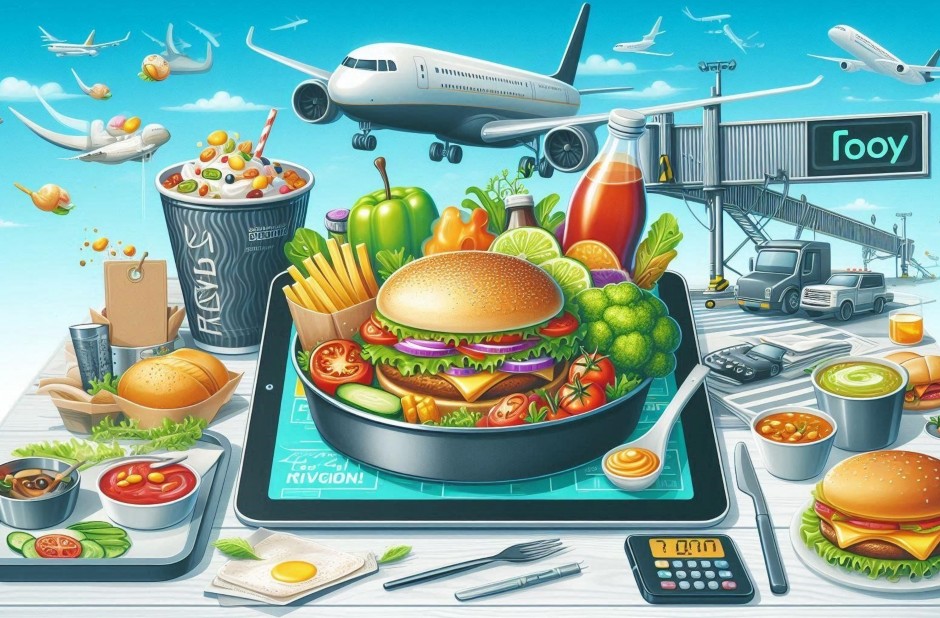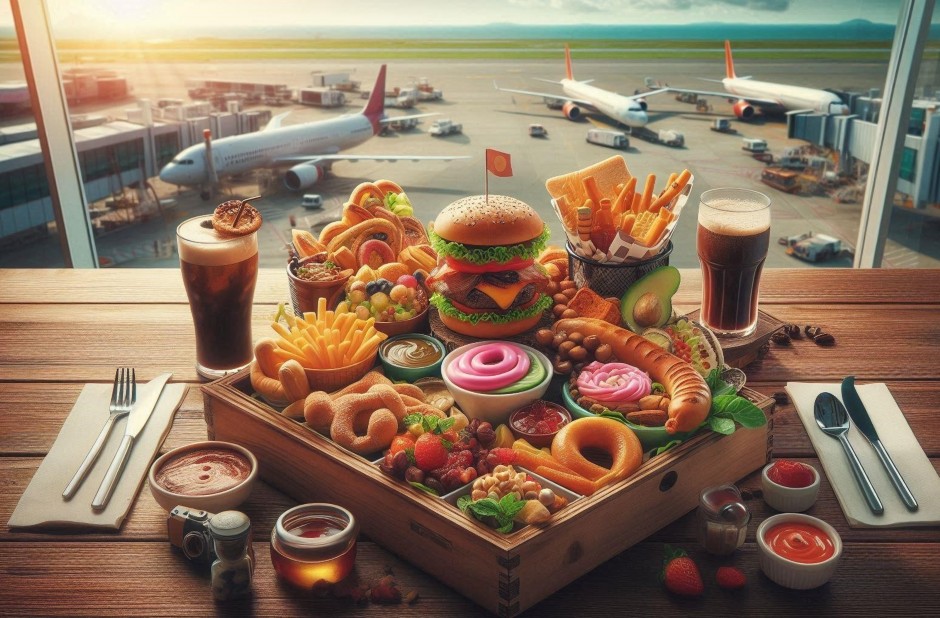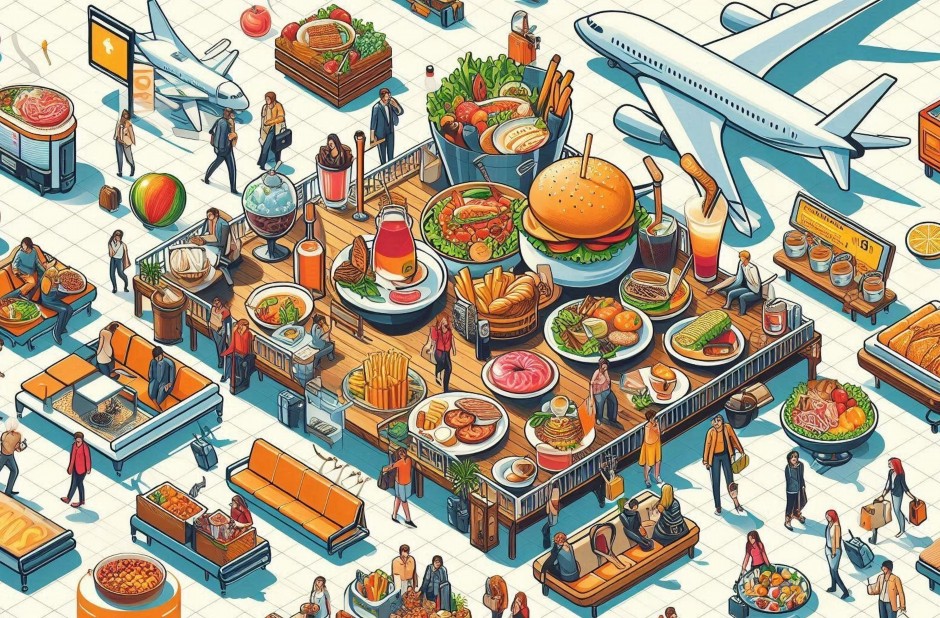For decades, airport food was synonymous with long lines, limited choices, and disappointing flavors. Travelers often faced the dreaded dilemma of overpriced sandwiches or bland fast food. However, a quiet revolution has been taking place in airports around the world. Terminals are evolving into culinary destinations, offering travelers a rich selection of gourmet meals, local delicacies, and convenient, health-conscious options. This transformation is redefining how we think about food on the go and making airport dining an integral part of the travel experience.

The Shift in Traveler Expectations
Modern travelers are more discerning than ever. With the rise of global cuisine, the influence of social media, and an increasing awareness of health and wellness, people want better food no matter where they are — including at the airport. Millennials and Gen Z, in particular, are driving demand for higher-quality, sustainable, and Instagram-worthy meals. Airports have responded by investing heavily in food and beverage offerings, recognizing that a satisfied traveler is a loyal one.
The Rise of Gourmet and Local Cuisine
One of the most noticeable changes in airport food culture is the presence of gourmet restaurants and regional specialties. Gone are the days when fast food chains dominated every terminal. Today, airports are working with celebrity chefs and acclaimed restaurateurs to bring high-quality, locally inspired cuisine to their concourses.
In San Francisco International Airport, travelers can enjoy a bowl of ramen at a local favorite or sip wine paired with artisan cheese from Napa Valley. At Heathrow in London, you can sit down to a meal curated by Gordon Ramsay. Meanwhile, airports in Asia, such as Tokyo Haneda or Singapore Changi, offer a wide array of authentic street food and fine dining, representing the best of local flavor.
Healthier Choices for Conscious Eaters
Another significant development in airport food is the availability of healthier options. Travelers are no longer restricted to greasy burgers or sugary snacks. Instead, they can choose from fresh salads, organic juices, vegetarian and vegan dishes, and gluten-free meals. Smoothie bars, poke bowls, and plant-based menus are becoming standard fare in many major airports.
These healthier options cater not only to dietary needs but also to time constraints. Pre-packaged healthy meals that don’t compromise on quality are ideal for busy travelers who want to eat well on the move. Brands like LEON, Joe & The Juice, and Farmer’s Fridge are expanding into airport spaces, emphasizing clean ingredients and quick service.
Technology and Convenience: Dining in the Digital Age
Technology is playing a major role in the airport food revolution. From mobile ordering to AI-driven recommendations, travelers are benefiting from tools that make it easier than ever to find and enjoy a great meal.
Many airports now offer apps that help you browse menus, locate restaurants by terminal, place orders ahead of time, and even have food delivered to your gate. Self-service kiosks speed up the process, while some terminals feature smart vending machines offering everything from gourmet meals to fresh salads and international snacks.
Innovative solutions like QR code ordering and contactless payment also gained traction during the COVID-19 pandemic and have remained popular due to their convenience and speed.

Top Airports Leading the Culinary Charge
Not all airports are created equal when it comes to dining, but several stand out as leaders in this culinary transformation:
- Singapore Changi Airport (SIN): Known for its wide range of food courts and upscale dining options, Changi offers everything from traditional Singaporean hawker fare to international cuisine in an aesthetically stunning environment.
- Tokyo Haneda Airport (HND): Offers sushi bars, tempura shops, and noodle houses that rival what’s found in Tokyo’s city center, all with quick service and high-quality ingredients.
- Hartsfield-Jackson Atlanta International Airport (ATL): A surprising haven for Southern cuisine, ATL features everything from barbecue joints to upscale seafood and farm-to-table eateries.
- Munich Airport (MUC): With its on-site brewery and Bavarian-style restaurants, travelers can enjoy a unique cultural and culinary experience right at the terminal.
- Portland International Airport (PDX): Known for supporting local businesses, PDX offers artisanal coffee, gourmet food carts, and fresh, regional ingredients.
Bringing Local Culture into the Terminal
Airports are increasingly seen as the first and last impression of a destination. With this in mind, many have made efforts to incorporate local culture into their dining offerings. This can mean highlighting indigenous ingredients, partnering with regional farms, or showcasing dishes that reflect the culinary identity of the region.
For example, in Austin-Bergstrom International Airport, you can enjoy Tex-Mex and brisket sandwiches that celebrate the city’s barbecue culture. In Bangkok’s Suvarnabhumi Airport, authentic Thai street food is available, from green curry to mango sticky rice. This emphasis on locality not only enhances the traveler’s experience but also supports local economies and small food producers.
Sustainability and Ethical Choices
Another aspect of the airport food revolution is the focus on sustainability. With increasing awareness about environmental impact, travelers and airport operators alike are demanding more ethical and eco-friendly practices. This includes reducing single-use plastics, offering plant-based alternatives, sourcing locally, and minimizing food waste.
Airports are also adopting green certifications and eco-labeling to help passengers make informed choices. Compostable packaging, reusable utensils, and filtered water stations are becoming more common, all of which contribute to a more sustainable airport environment.

Tips for Navigating Airport Dining Like a Pro
To make the most of your airport dining experience, consider these tips:
- Plan ahead: Use airport apps or websites to research food options before you arrive. Some apps even show wait times and menu previews.
- Arrive early: Give yourself extra time to explore your options, especially at larger airports with multiple terminals.
- Look beyond the gate area: The best food might be in another concourse. If time permits, it’s worth the walk.
- Stay hydrated: Drink water before and during your flight — many quality food outlets offer filtered water refill stations.
- Try local: Opt for restaurants and dishes that reflect the local culture. It's a great way to start or end your journey.
The Future of Airport Dining
The airport dining landscape will likely continue to evolve rapidly in the coming years. As more travelers demand quality, convenience, and sustainability, airports will keep innovating. We can expect more ghost kitchens, where meals are prepared offsite and delivered on demand, along with more AI-enhanced food suggestions based on preferences and travel plans.
Virtual reality menus, robotic chefs, and drone food delivery to gates might sound futuristic now, but they’re not far from becoming reality. Meanwhile, partnerships between airlines and gourmet chefs could make in-flight and terminal meals even more seamless and enjoyable.
Conclusion
The days of settling for a stale sandwich at the airport are long gone. A culinary revolution has transformed terminals into places where food is not just an afterthought but a highlight of the journey. With more choices, better quality, and greater attention to health, sustainability, and technology, airport dining is no longer a compromise — it's an opportunity.
Next time you pack your bags, add one more thing to your travel checklist: discover something delicious before you fly. Whether it’s sipping craft beer at a terminal bar in Munich or enjoying fresh sushi in Tokyo, your trip starts with your taste buds.
